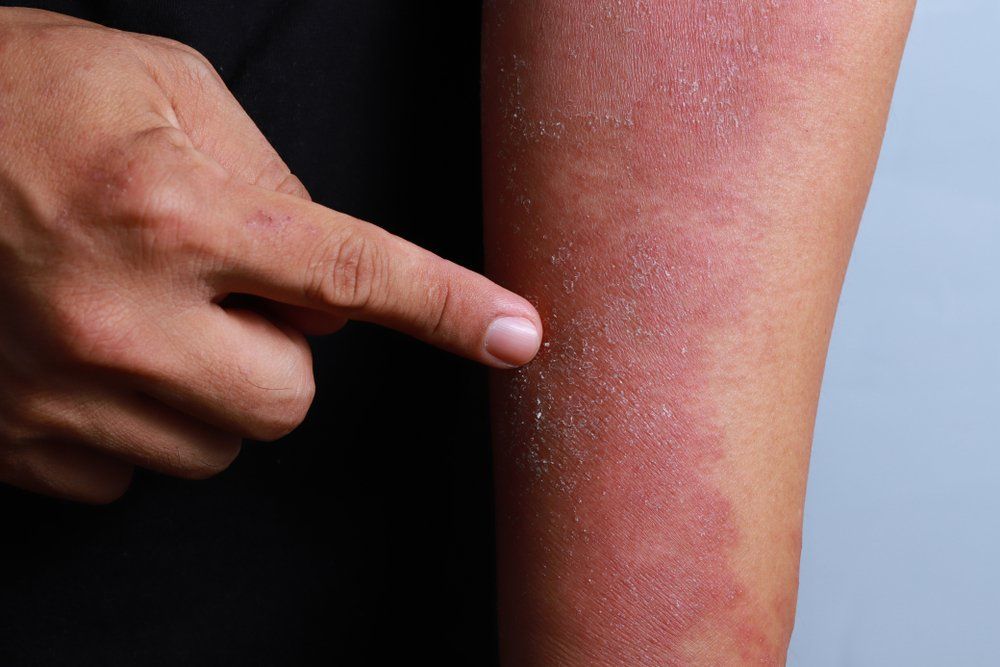- Acne
- Actinic Keratosis
- Aesthetics
- Alopecia
- Atopic Dermatitis
- Buy-and-Bill
- COVID-19
- Case-Based Roundtable
- Chronic Hand Eczema
- Chronic Spontaneous Urticaria
- Drug Watch
- Eczema
- General Dermatology
- Hidradenitis Suppurativa
- Melasma
- NP and PA
- Pediatric Dermatology
- Pigmentary Disorders
- Practice Management
- Precision Medicine and Biologics
- Prurigo Nodularis
- Psoriasis
- Psoriatic Arthritis
- Rare Disease
- Rosacea
- Skin Cancer
- Vitiligo
- Wound Care
Article
Atopic dermatitis treatment hurdles
Author(s):
It’s an exciting time for atopic dermatitis patients as many new treatment options are on the market and in the pipeline. But treatment doesn’t yet offer a cure and many patients continue to suffer with symptoms, including itch, psychosocial and quality-of-life issues, according to a recent paper.

It’s an exciting time for atopic dermatitis patients as many new treatment options are on the market and in the pipeline. But treatment doesn’t yet offer a cure and many patients continue to suffer with symptoms, including itch, psychosocial and quality-of-life issues, according to a paper published February 2020 in Expert Opinion on Drug Discovery.
RELATED: Molecular mechanisms that disrupt the epidermal barrier
“[Atopic dermatitis] is a systemic atopic disease with a lot of complicated psychosocial issues. Suboptimal efficacy is often due to poor compliance and unrealistic expectation of curative treatment, rendering treatment difficult despite the existence of effective medications,” write the review’s Chinese and Canadian authors.
In their review of atopic dermatitis drug discovery efforts, the authors study treatment options from topical corticosteroids to dupilumab. They also address treatment hurdles.
Topical corticosteroids and calcineurin inhibitors remain treatment mainstays, along with moisturizers. Corticosteroids, which mediate anti-inflammatory effects in affected cells in atopic dermatitis, can lead to side effects, especially in pediatric patients. The perception of risk is another problem. Unfortunately, patient hesitation and steroid phobias leave many using corticosteroids sub-optimally. Topical calcineurin inhibitor use has been limited by high treatment costs and black box warning controversies, they write.
The challenge with commercial moisturizers is there aren’t many research trials to prove their clinical efficacy. The research that does exist suggests moisturizers can have a beneficial effect on atopic dermatitis but no one product seems to stand out from the others, according to the review.
Topical immunomodulators pimecrolimus and tacrolimus, which down-regulate inflammation, are safe and effective corticosteroid alternatives. Crisaborole 2% topical ointment, a phosphodiesterase E4 (PDE4) inhibitor, is yet another alternative option to corticosteroids that does not cause skin thinning. It also interrupts the itch sensation and itch-scratch cycle to improve quality-of-life for atopic dermatitis patients. PDE4 inhibitors apremilast and OPA-15406 ointment, as well as topical Janus kinase (JAK) inhibitors are in the pipeline and are showing promise in the treatment of atopic dermatitis, add the study authors.
RELATED: Eczematous eruptions in psoriasis patients using IL-17 inhibitors
Led by FDA-approved dupilumab, biologics are changing treatment of moderate-to-severe disease. Nemolizumab, a humanized antibody against interleukin- (IL-) 31, has been shown in studies to improve itch in atopic dermatitis but remains in the pipeline. And Alefacept, which the review authors write is an effective treatment for moderate-to-severe atopic dermatitis, has significant toxicity when used long-term.
Other options, which lack good data proving their efficacy in atopic dermatitis, include drugs targeting histamines, herbal medicines, homeopathy, osteopathy, acupuncture and cupping, they write.
Medicine aimed at identifying patients’ specific characteristics to personalize atopic dermatitis treatment is the wave of the future.
Patients’ serum biomarkers, age, ethnicity, immunoglobulin E (IgE) status, phase (acute versus chronic), disease severity and presence of complications are among the considerations for determining optimal treatment, according to the paper.
Big data platforms could help innovate atopic dermatitis treatment. But this, too, is an area with challenges, including the need for transparency, security, ability to translate big data into meaningful information and quality assurance.
RELATED: Abrocitinib works quickly in atopic dermatitis
Atopic dermatitis drug discovery and development challenges include the high cost of many of the novel products developed in recent years. And while many patients expect to cure atopic dermatitis, there is no evidence of cure, the authors write.
Disclosures:
None reported.
References:
Hon KL, Loo S, Leung AKC, Li JTS, Lee VWY. An overview of drug discovery efforts for eczema: why is this itch so difficult to scratch?. Expert Opin Drug Discov. 2020;:1-12.
Newsletter
Like what you’re reading? Subscribe to Dermatology Times for weekly updates on therapies, innovations, and real-world practice tips.











